The history of Soviet cassette players (part two): Walkman boom, gadget for the KGB and tape recorders
We continue to talk about the Soviet portable cassette recorders. The first part of the material can be found here . The time has come for compact form factor devices, which are traditionally considered to be the heirs of the legendary SONY Walkman. Surprisingly, in a relatively short period, Soviet industry developed an impressive number of devices of this kind, many of which became real hits among Soviet youths of the 1980s.
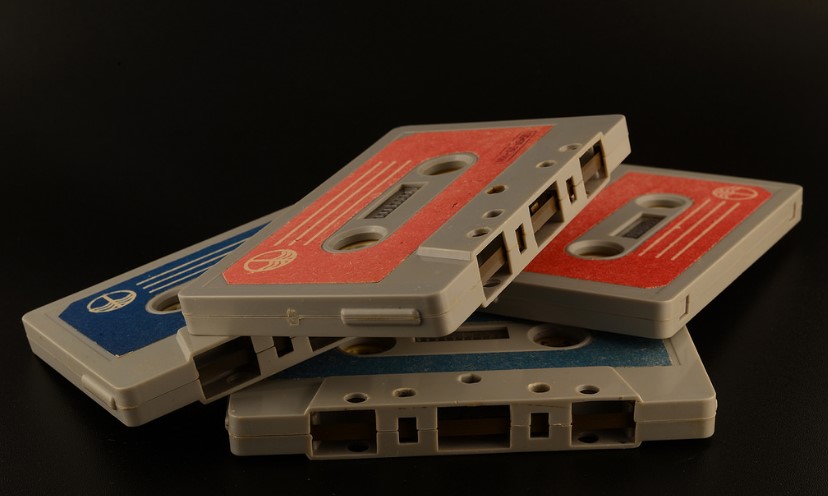
For me, this post is also a reason to be sad. My first audio gadget in my life was the “Electronics-331-stereo” portable tape recorder, which appeared in the family not much later than me, and later I used the same device with my first ZX-Spectrum computer. It was thanks to him that I became interested in music, and for the first time, breaking and trying to fix it, I learned that Japanese engines were being put into Soviet tape recorders.
And in the 80s the Union again lagged behind the developed countries in tape recorders for 6-7 years. But, to the credit of those responsible for planning, the lag in portable tape recorders was reduced quite quickly, in terms of assortment, even faster than on other "fronts of the electroacoustic front." As you know, the first massive Sony Walkman TPS-L2 cassette player appeared in 1979. So in the fall of 1984, the Soviet analogy came out - a cassette player or, as it was literally translated at that time, a cassette player "Electronics-Microconcert-Stereo".
')
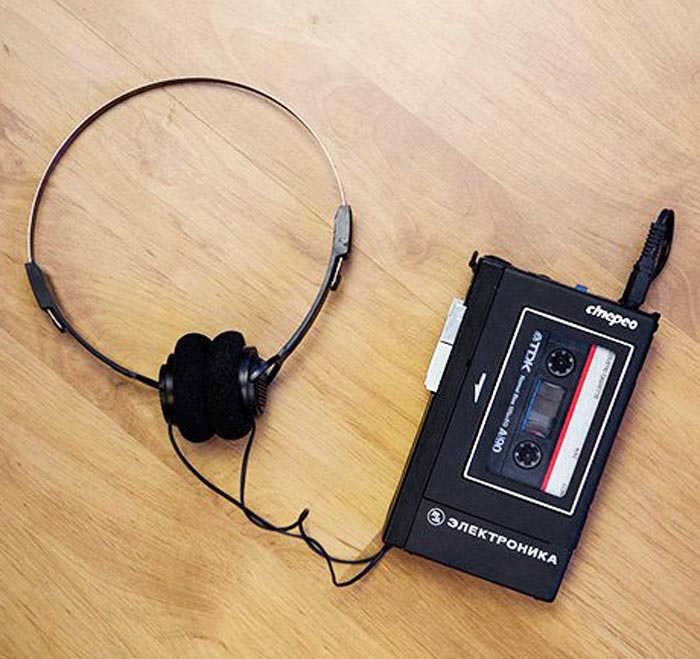
The novelty was released by Zelenograd “TochMash”. Not surprisingly, the player copied that in the 80s it was even more common development practice than before they started. As a prototype was chosen one of the modifications Sony Walkman TPS-L2. As in the previous cases of brazen plagiarism (cross out) of skillful copying, only the mechanical part completely licked, i.e. tape drive There are problems with electronics due to the lack of suitable chips in the country.
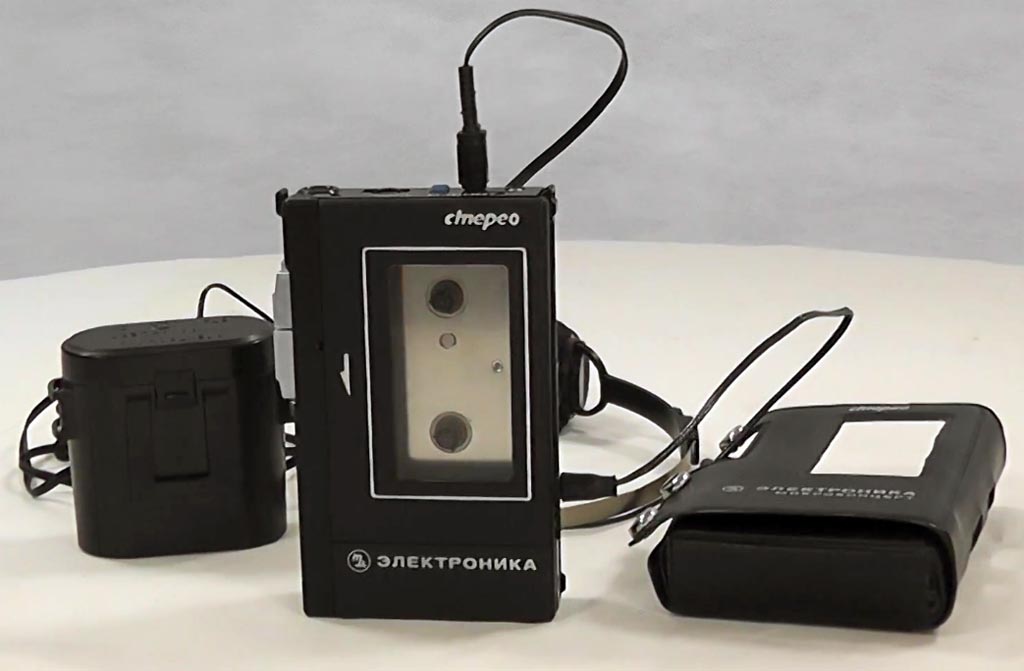
So, the first Soviet player received electronic filling on the spreading surface, silicon transistors KT3129 and KT3130 were used as the basis. By 1988, the KF1407UD1 chip was developed, which made it possible to equip the device with the ability to record and translate it into a class of compact tape recorders.
They experimented a lot with the device, for example, in 1985 they dressed them in a metal case, thus anticipating the trend of the mid-nineties. However, having released a small series, they returned to plastic, realizing the economic inexpediency of such a decision. Another characteristic feature of the model, which was not in the Japanese relative, was the built-in high sensitivity microphone, which appeared long before the device was equipped with the recording function. The microphone served as a hearing aid, and could do it even at the time of playback.
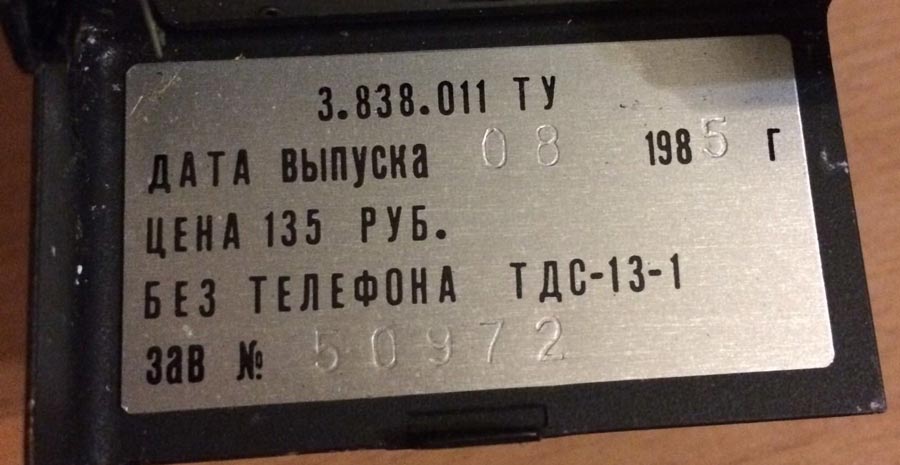
Technologies and solutions worked out at Electronics-Microconcert-Stereo made it possible to create a whole range of other players. So in 1985, a whole line of players, "Electronics-P", which was produced at the Aliot plant in Novovoronezh, appeared. The base model was the P-401C Electronics, which was a classic three-button button with one-way rewind, which was able to work 3 hours from four AA batteries.
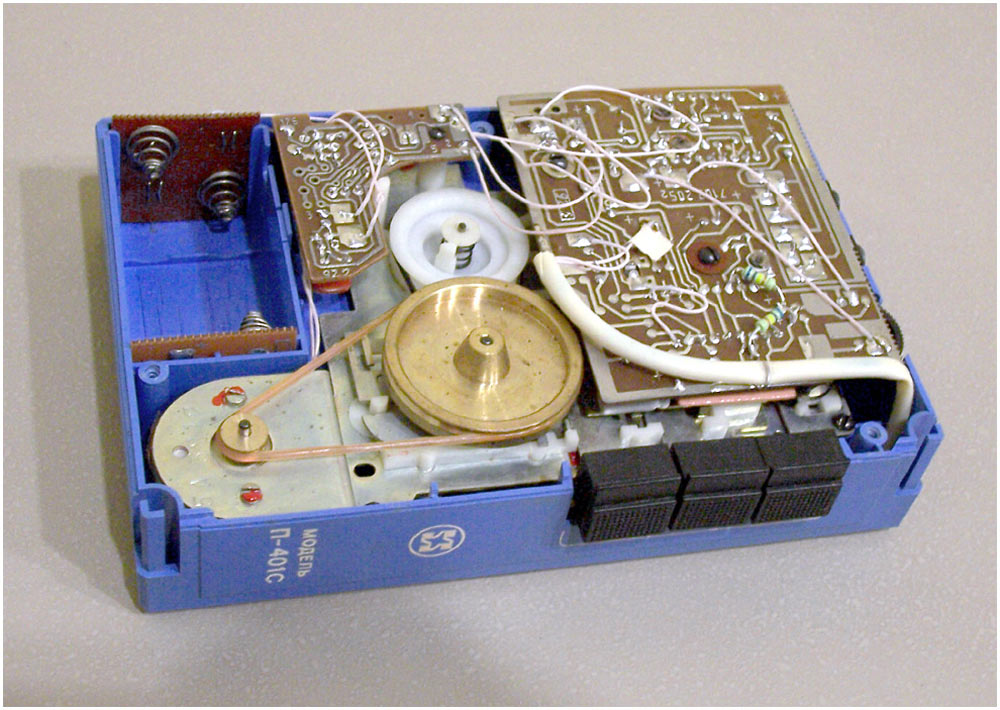
Its characteristics practically did not differ from the Soviet firstborn and were as follows:
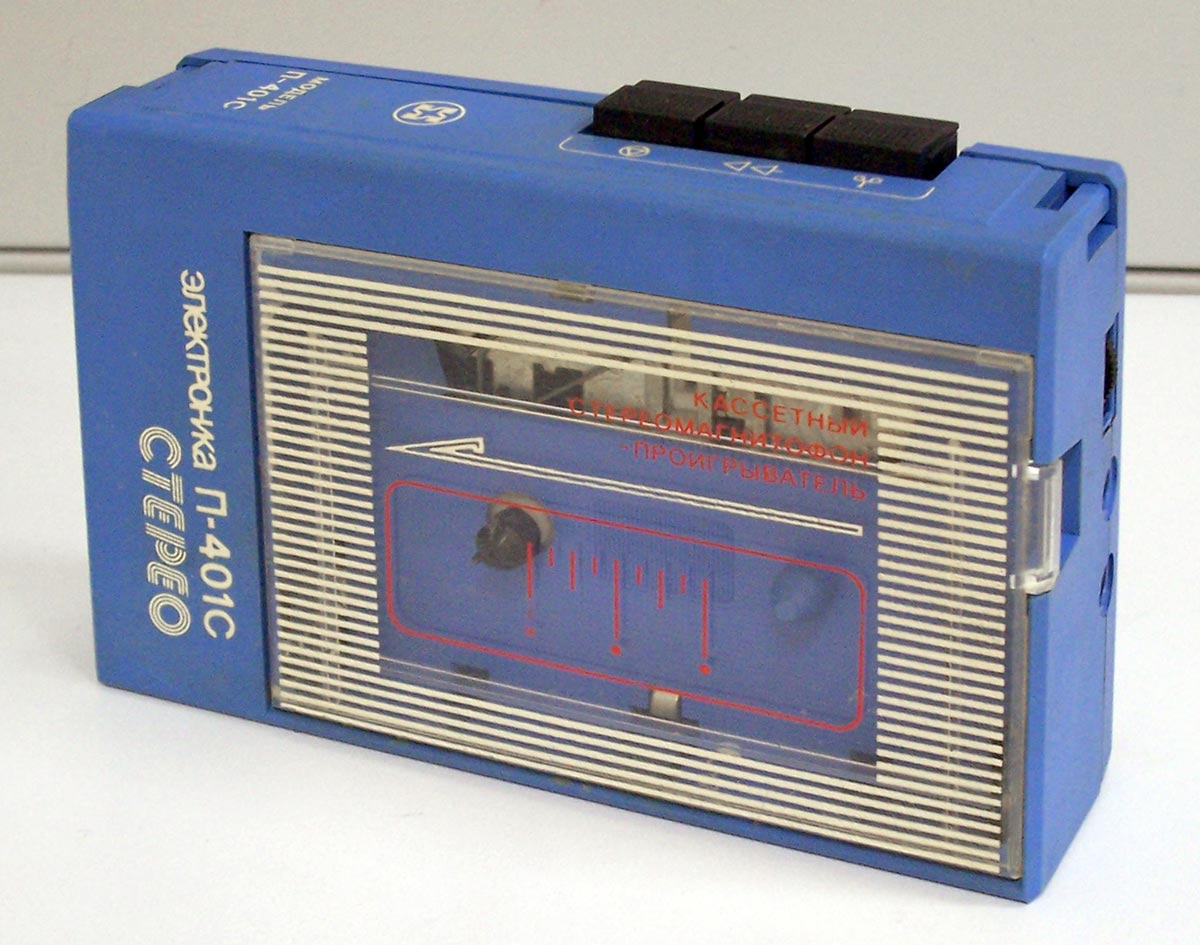
Special mention, in my opinion, deserves the player "Quasar P-405S", which since 1988 has been mass-produced by the Leningrad PO them. M.I. Kalinina. This player was notable for its original design and had relatively good performance compared to other counterparts from the Country of Soviets, for example, an extended frequency range, which was 63-12500 Hz.
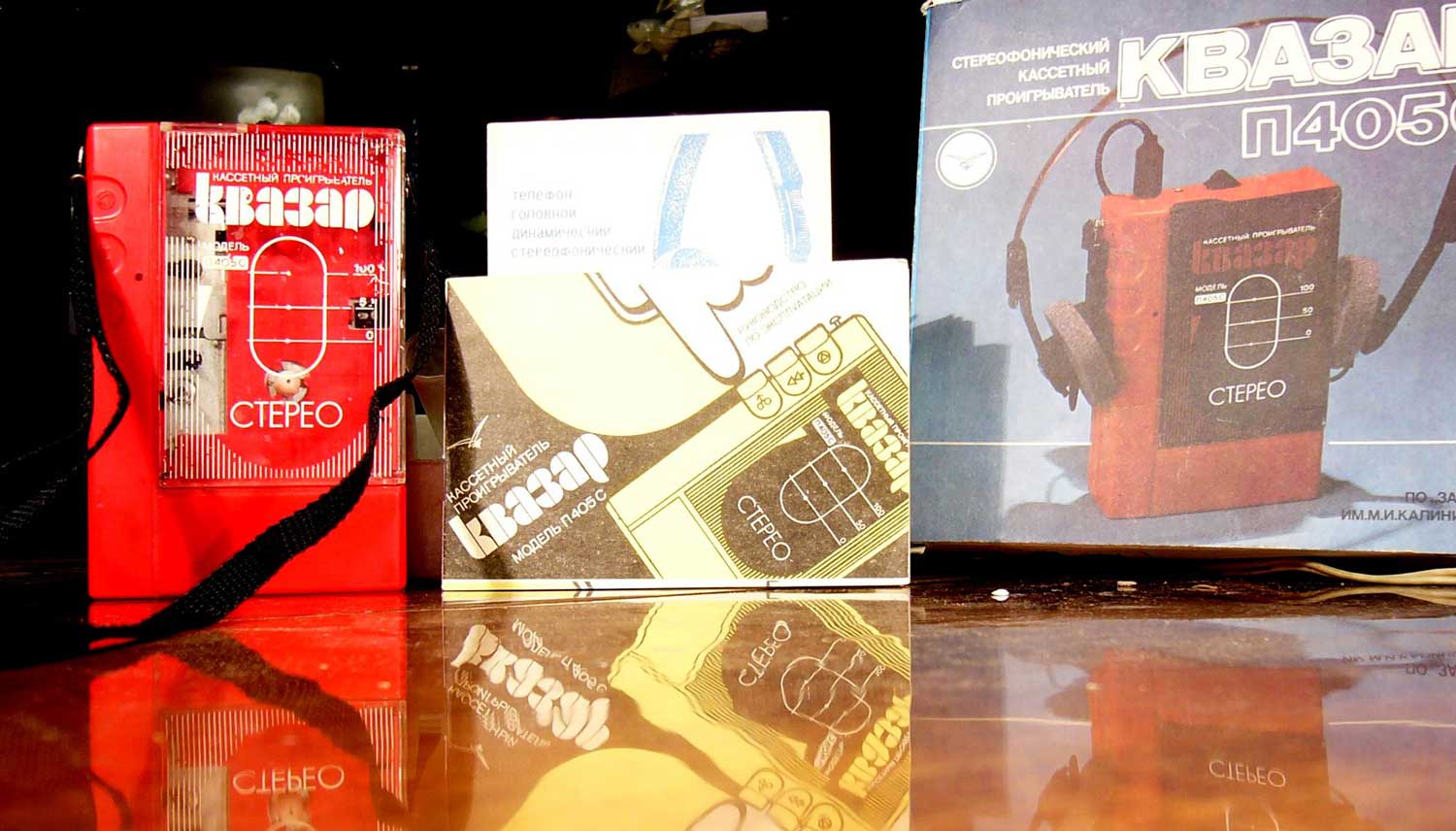
Also a separate mention deserves the bold development of the Zaporozhye plant Iskra NT-R-91. The project combined a small active speaker system and player. For unknown reasons, the device did not go into the series, but the idea was very original for the 80s. The form factor of the AU is close to what they began to create as multimedia speakers for a computer in the late 90s - early 2000s.
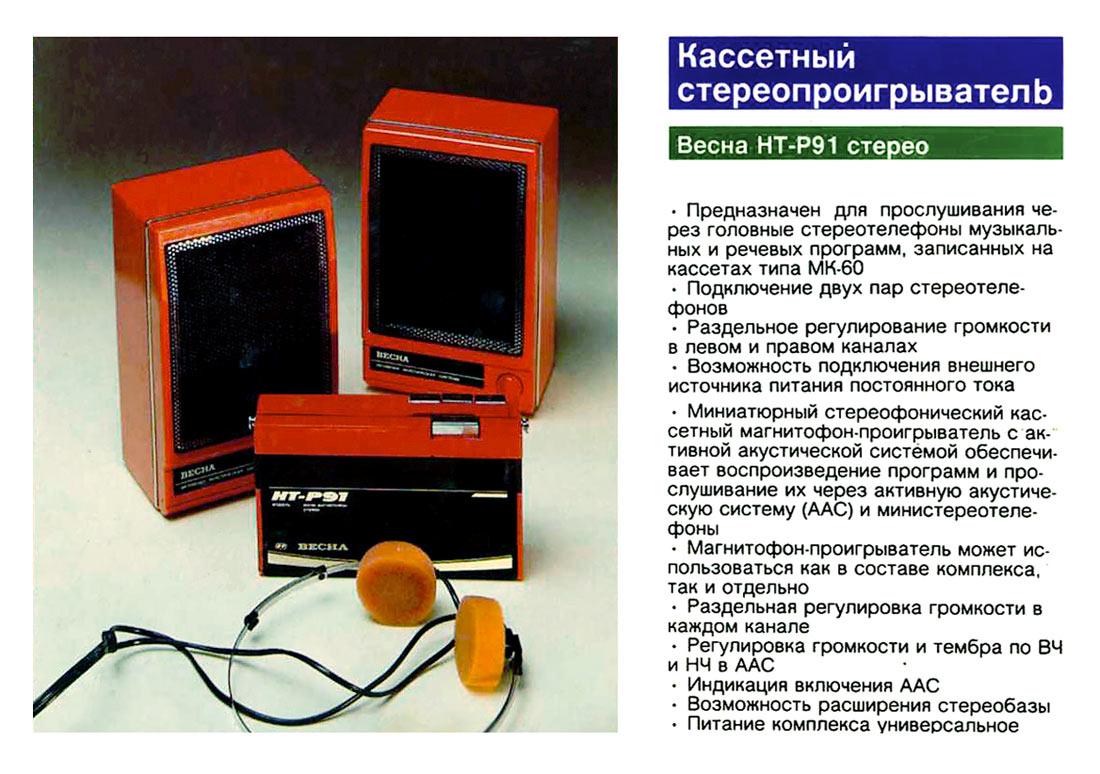
By 1985, the development of devices had been implemented, also copying Japanese counterparts, while having enhanced functionality. These were compact (mobile) tape recorders. The prototype for the legendary Soviet technology was the no less legendary Sony TCS-310.
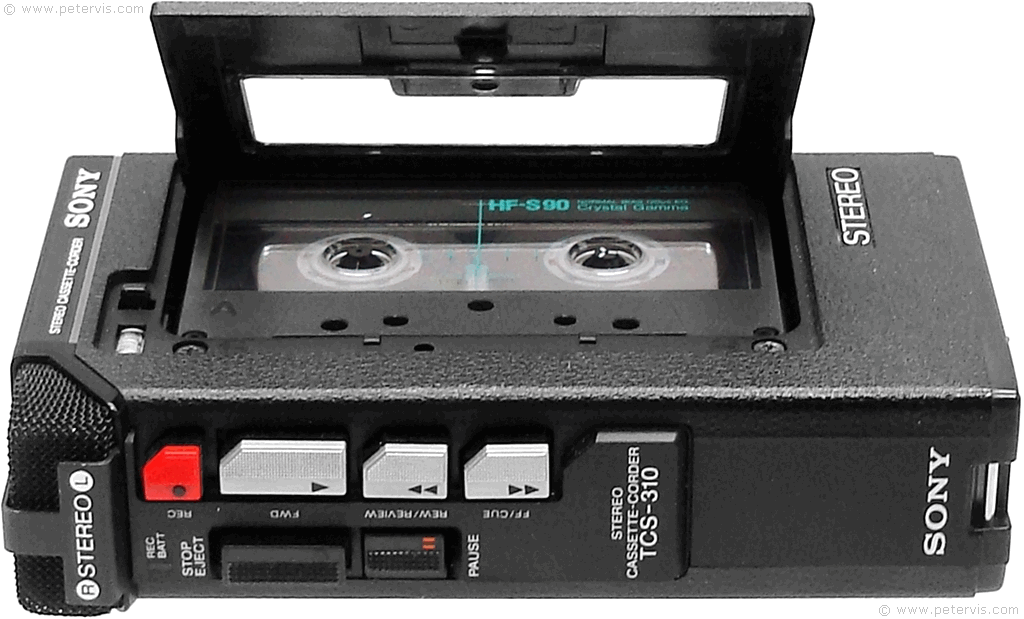
The first such tape recorder of the Soviet production was “Electronics-331-stereo", which was experimentally produced in small series from 1986 to 1989 at the Novi-Voronezh enterprise "Aliot".
It was this portable tape recorder that became one of the first sound reproducing devices in my life, along with one of the Soviet players. Tellingly, “Electronics-331-stereo" was equipped with an engine and magnetic heads of the company, as well as an RFU board from SONY.
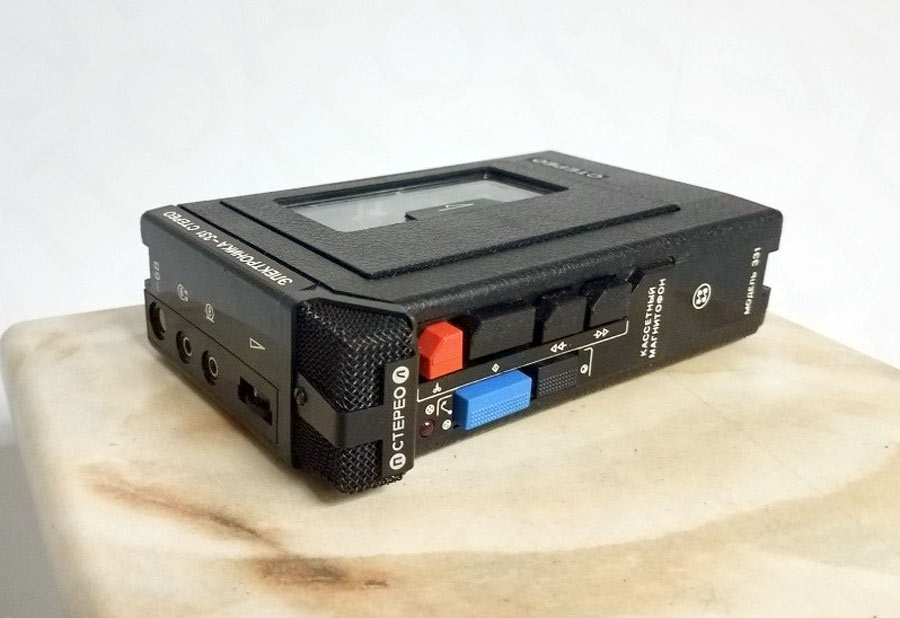
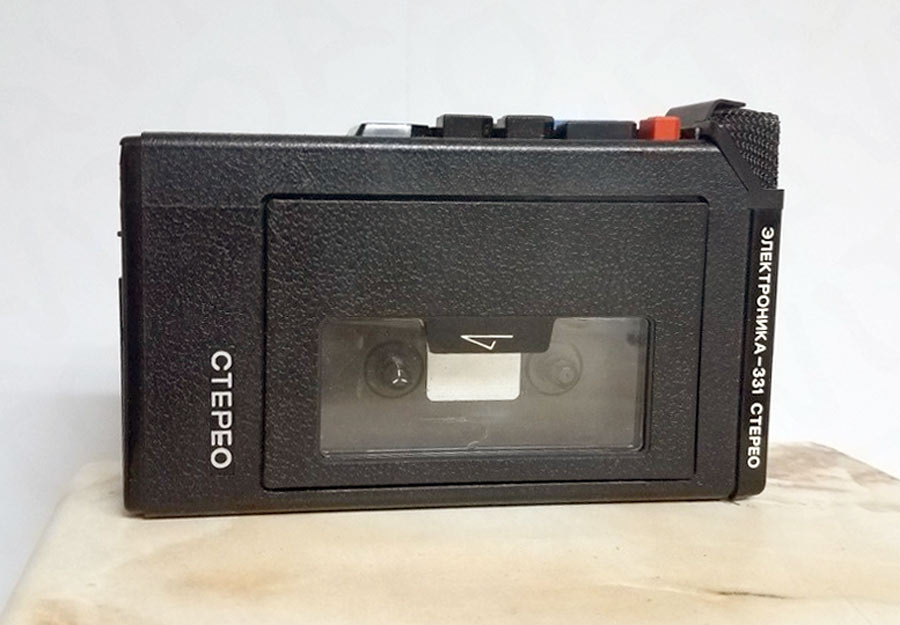
And, despite a lot of advantages, it was characterized by extreme energy vigor, propensity to chew the tape, and also by the fact that most of the repair shops refused to carry out its repair due to the structural complexity of the tape drive mechanism.
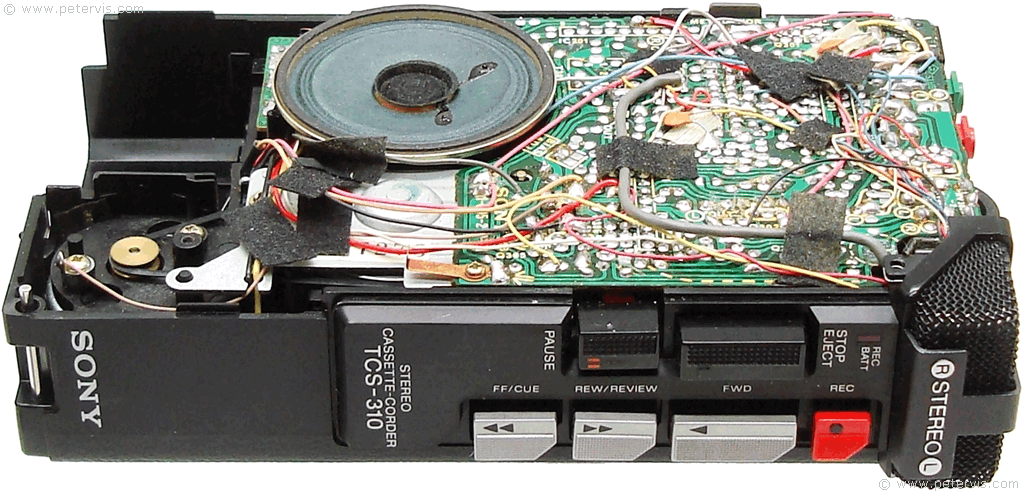
The characteristics of the device today may seem mediocre, but for the USSR in 1985, even with the new form factor, they at least impressed users: Fortunately, SONY designers worked hard to create the original.
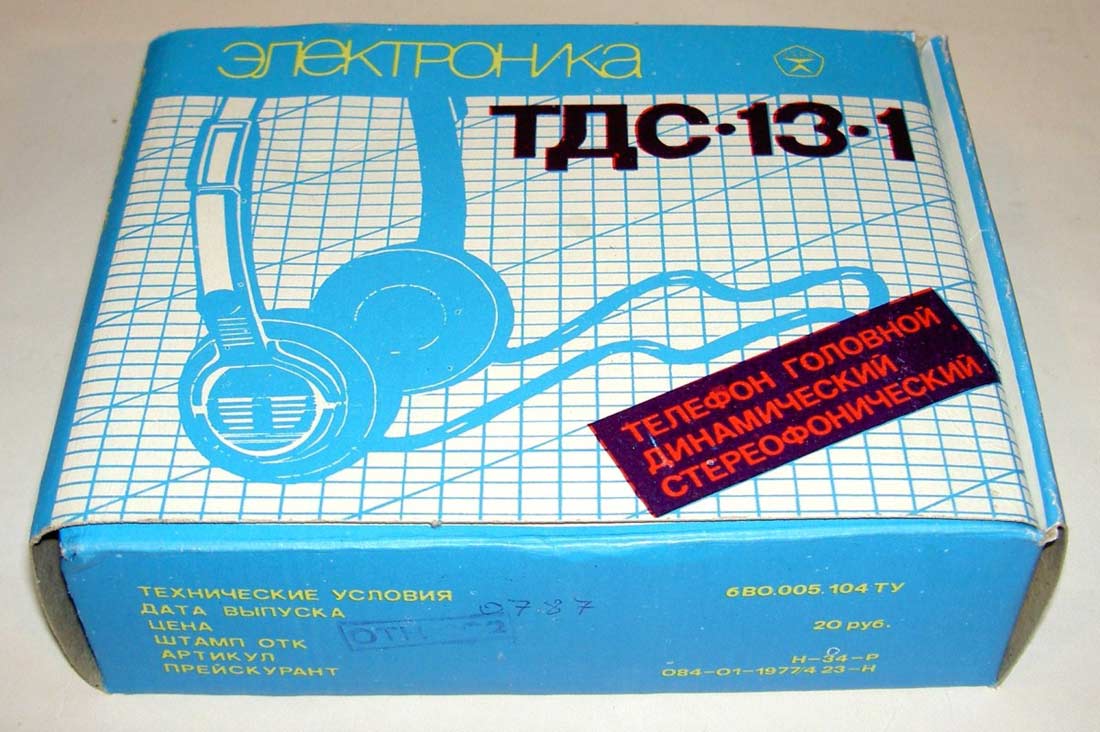
The retail price of such headphones outside the kit was 20 rubles.
The complete set of “Electronics-331-stereo" could be purchased for 190 rubles, while the tape recorder was a relative rarity, like so much else in the Soviet Union of the 1980s, it had to be “got”.
A year later, a more simplified “popular” version of the Soviet tape recorder “Electronics-Stereo” (mini-stereo) appeared, the release of which roughly started in 1986 at the same Aliot plant. Its characteristics were not very different from the “Electronics-331-stereo", while the design of the device was simplified, more democratic materials were used.
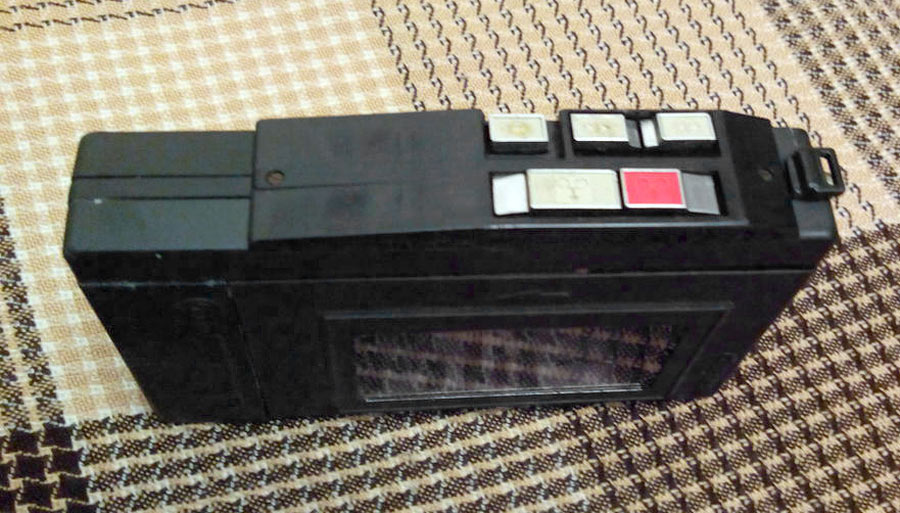
He looked worse because he was probably his own development of the enterprise. He inherited not all diseases of the 331rd, for he was constructively simpler, therefore repairable. It turned out that the “Electronics-stereo” is more adapted for use in the harsh conditions of Soviet reality than a copy of the famous Japanese.
Characteristics of the device were as follows:
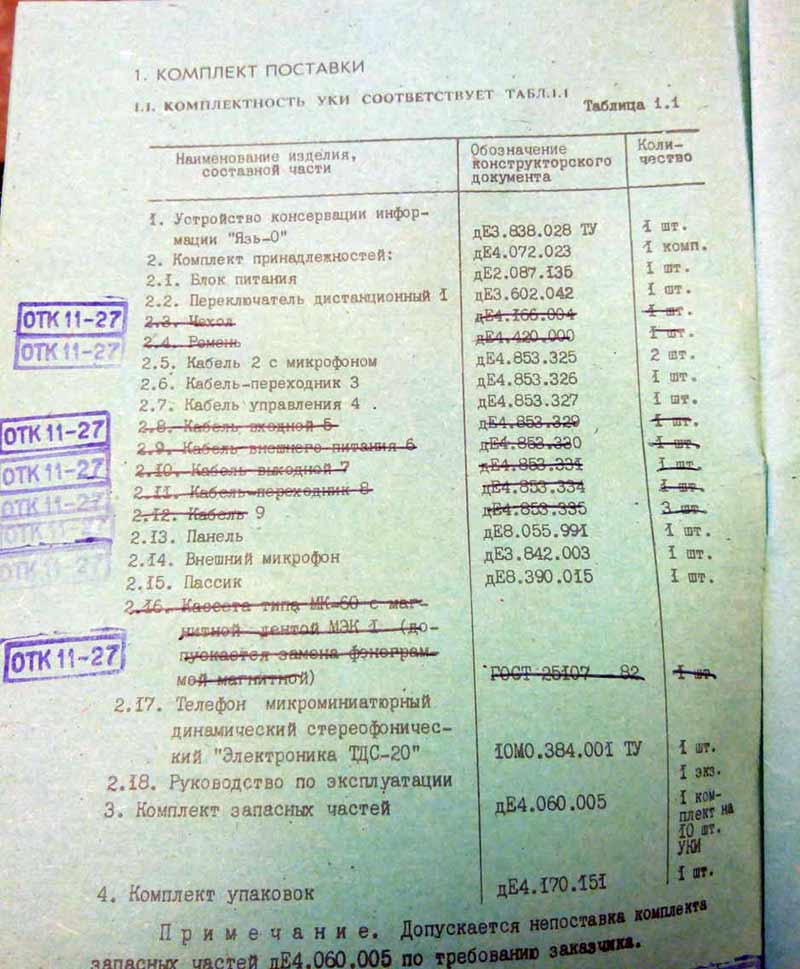
This tape recorder differed from the “Electronics-stereo” only in that it was equipped with two speeds, and accordingly, it had 2 operating frequency ranges: 200 - 5000 Hz and 200 - 10,000 Hz.
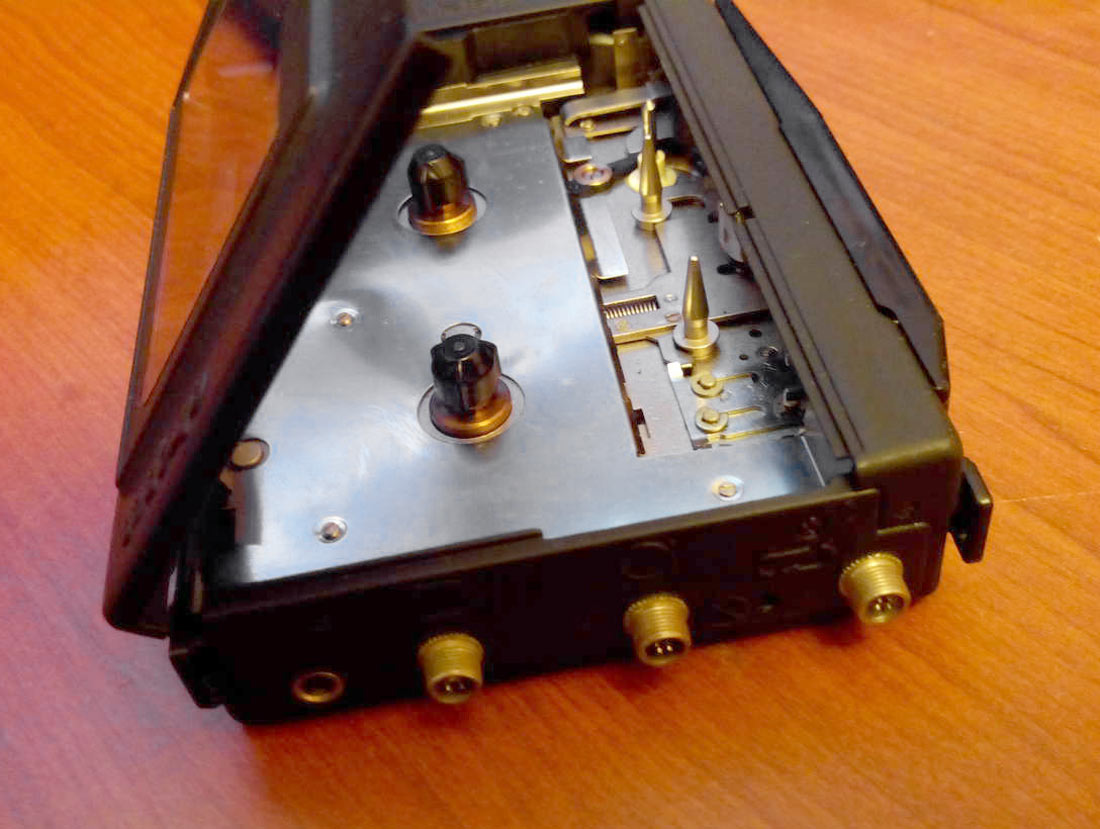
Both the “Electronics-stereo” and its KGB-shny clone were probably equipped with the first Vladysh-type headphones in the USSR, in the terminology of those years with microminiature TDS-20 stereo headphones. Traditionally, for Soviet headphones, they were not very ergonomic, but differed by quite decent sound:
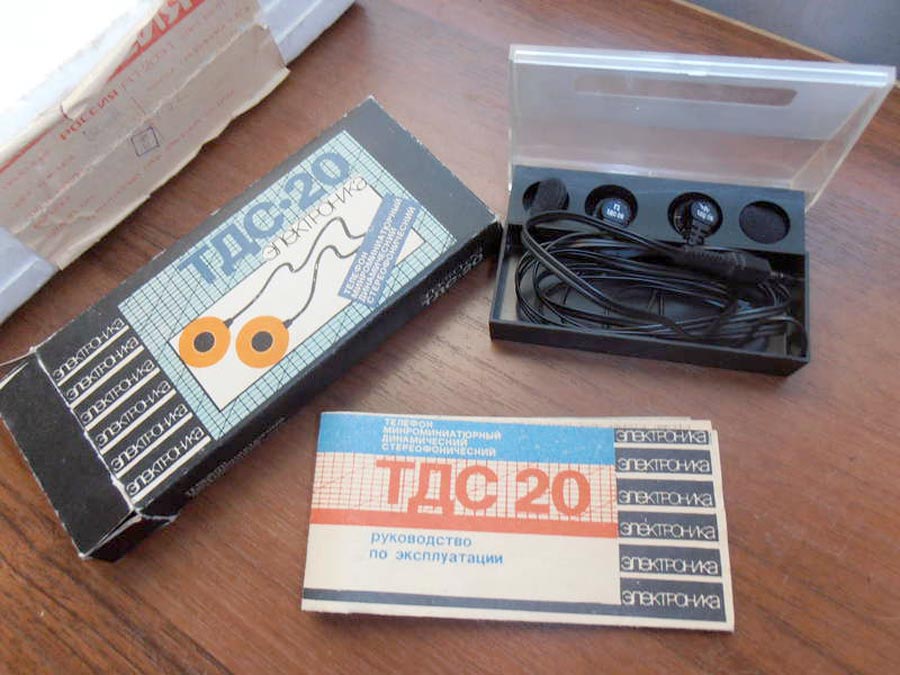
A logical continuation of the experimental “Electronics-331-stereo” was a modification called “Electronics M-332S”, which practically did not differ from its predecessor externally, while being spared from childhood diseases while retaining all the characteristics that are important for quality. The tape recorder went on sale in 1989 m year
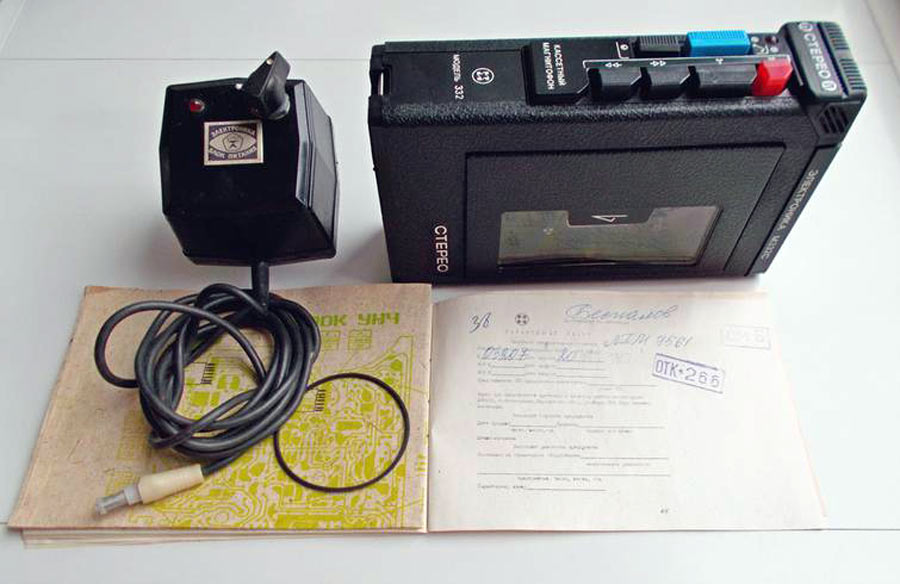
As is clear from the photo, he was an improved copy of the Sony TCS-310.
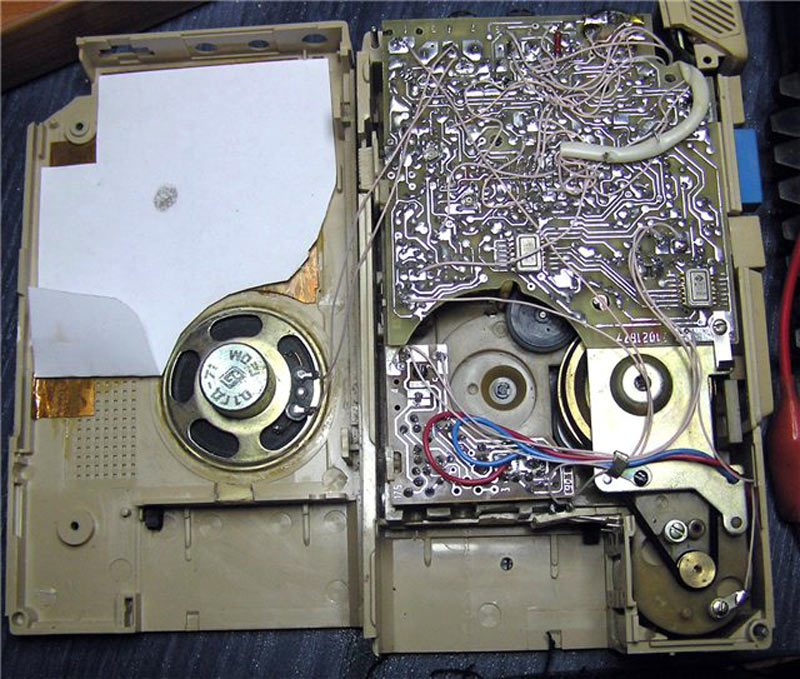
One of its modifications "Electronics M-334S" (kangaroo) deserves special attention, which, like the others, was produced by the Novi-Voronezh plant "Aliot". The modular device consisted of a tape recorder itself, a sound amplification and power module, as well as a passive speaker system.

For simplified differentiation, the modular device received the designation "Electronics M-334S". It is believed that this modular tape recorder was one of the best in the USSR. Unfortunately, due to the extremely limited batch, there is little information about this device and it is difficult to verify it.
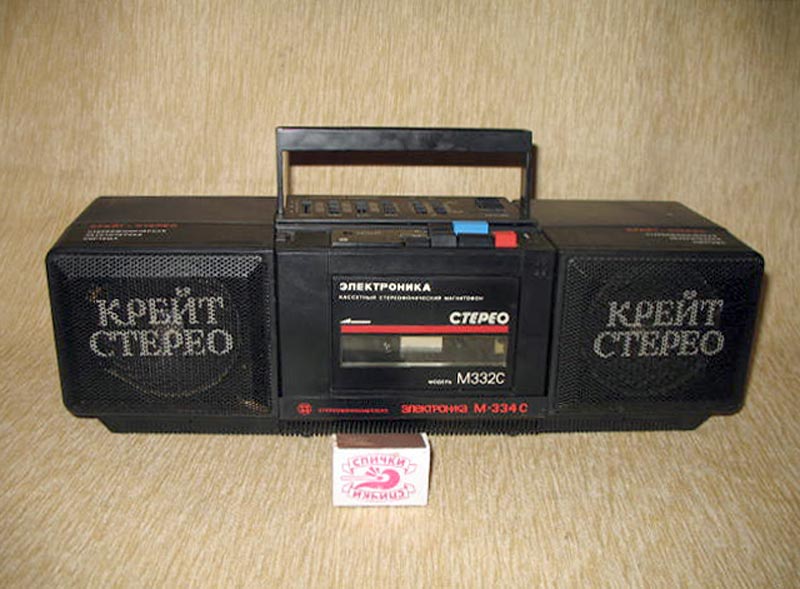
There were many other modular experiments. In addition to the already mentioned “Spring”, the modular “Amfiton MC” tape recorder deserves attention.
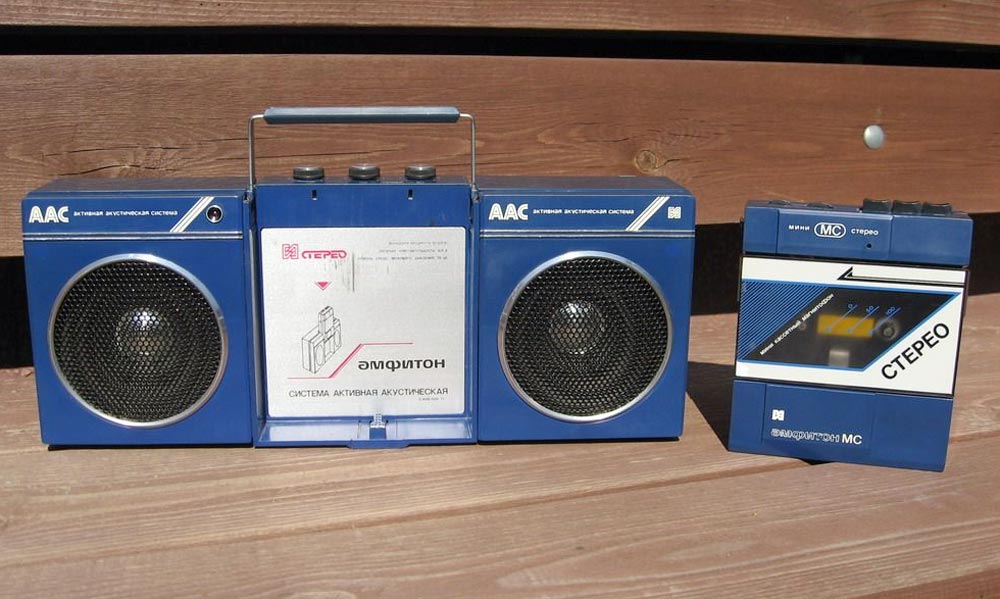
It embodied the idea of combining the modules of a compact player, an active speaker system and a power supply. The device was developed by Omsk Karl Marx ETZ, where it has been mass-produced since 1987.
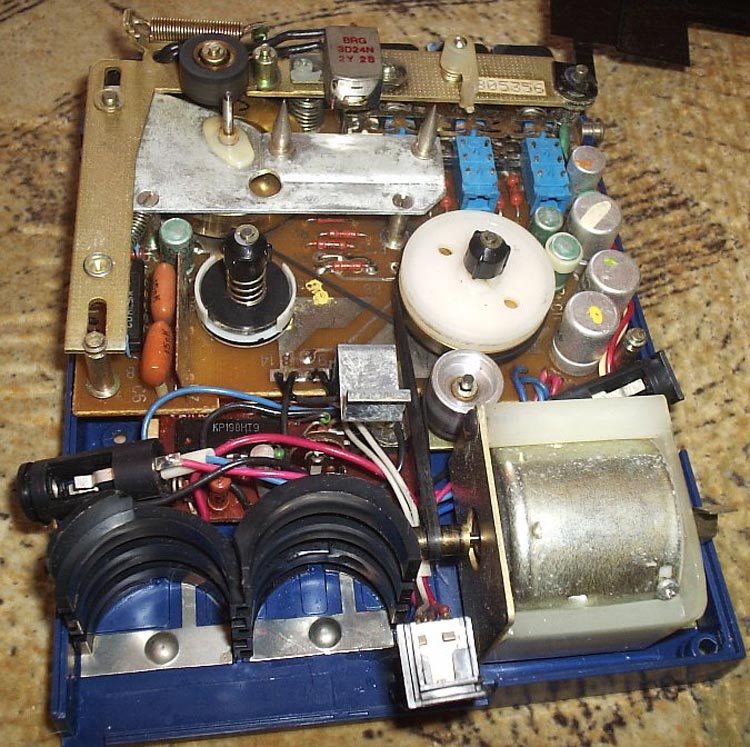

He became the first modular serial Soviet tape recorder. There is no data on the number of devices released, but the popularity of the modular system is easy to judge by the number of enterprises that produced them:
Omsk Karl Marx ETZ,
Leningrad plant "Novator",
Lviv plant named after Lenin,
Saratov Precision Electromechanical Plant
Kamenetz-Podolsk plant "Electropribor" named after the 60th anniversary of the USSR.
Characteristics of the device were quite acceptable for the Soviet technology of that period:
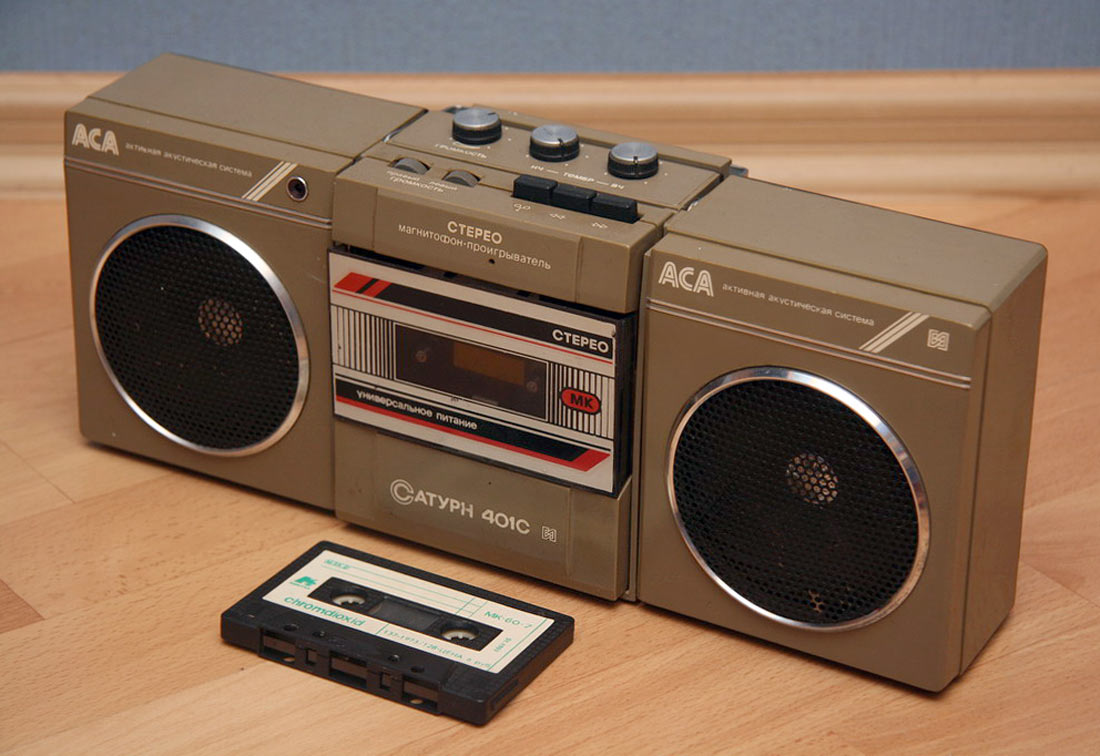
Digging into the theme of the Soviet tape recording industry, I began to realize that I would barely manage with four materials, due to the fact that the cassettes worthy of writing about them in the USSR created quite a lot. The boom in the development and production of compact cassettes has faded away after the collapse of the Union, mainly due to the subsequent collapse or re-profiling of enterprises. In total, over a short period before 1991, more than 50 models of compact players and tape recorders were developed, about half of which were mass-produced.
After 1991, only about 10 models of these classes are known, most of which were only introduced into the series in the 90s, and the main stages of development were overcome before the 91st year. The last Russian player is considered to be the cassette player "Russia KP-708", which was released in 2000. The engines of almost all Soviet players were Japanese, later Chinese and Malaysian, an impressive part of the technical solutions were borrowed in Japan and in the west. Meanwhile, it was a bright and interesting page in Soviet tape making, and some decisions of Soviet engineers were no less talented than those of foreign neighbors. Traditionally, I would appreciate comments.
Photo content used:
www.rw6ase.narod.ru
www.flickr.com/photos/41902337@N07
daxgarth.wordpress.com/2017/08/23/compact-cassette-proton-ussr
stereo.ru
forums.balancer.ru/tech/forum/2012/07/t66563_2--muzej-elektronnykh-raritetov.html
www.radiomuseum.org/r/grundig_c100l.html
igrovoetv.online
(If you are against using your photos in our material - write to us and we will replace them)
Jeans
We trade in electronics. A wide range of audio and video equipment, accessories, switching is presented in our catalog .

For me, this post is also a reason to be sad. My first audio gadget in my life was the “Electronics-331-stereo” portable tape recorder, which appeared in the family not much later than me, and later I used the same device with my first ZX-Spectrum computer. It was thanks to him that I became interested in music, and for the first time, breaking and trying to fix it, I learned that Japanese engines were being put into Soviet tape recorders.
Soviet player boom
And in the 80s the Union again lagged behind the developed countries in tape recorders for 6-7 years. But, to the credit of those responsible for planning, the lag in portable tape recorders was reduced quite quickly, in terms of assortment, even faster than on other "fronts of the electroacoustic front." As you know, the first massive Sony Walkman TPS-L2 cassette player appeared in 1979. So in the fall of 1984, the Soviet analogy came out - a cassette player or, as it was literally translated at that time, a cassette player "Electronics-Microconcert-Stereo".
')

The novelty was released by Zelenograd “TochMash”. Not surprisingly, the player copied that in the 80s it was even more common development practice than before they started. As a prototype was chosen one of the modifications Sony Walkman TPS-L2. As in the previous cases of brazen plagiarism (cross out) of skillful copying, only the mechanical part completely licked, i.e. tape drive There are problems with electronics due to the lack of suitable chips in the country.

So, the first Soviet player received electronic filling on the spreading surface, silicon transistors KT3129 and KT3130 were used as the basis. By 1988, the KF1407UD1 chip was developed, which made it possible to equip the device with the ability to record and translate it into a class of compact tape recorders.
They experimented a lot with the device, for example, in 1985 they dressed them in a metal case, thus anticipating the trend of the mid-nineties. However, having released a small series, they returned to plastic, realizing the economic inexpediency of such a decision. Another characteristic feature of the model, which was not in the Japanese relative, was the built-in high sensitivity microphone, which appeared long before the device was equipped with the recording function. The microphone served as a hearing aid, and could do it even at the time of playback.

Technologies and solutions worked out at Electronics-Microconcert-Stereo made it possible to create a whole range of other players. So in 1985, a whole line of players, "Electronics-P", which was produced at the Aliot plant in Novovoronezh, appeared. The base model was the P-401C Electronics, which was a classic three-button button with one-way rewind, which was able to work 3 hours from four AA batteries.

Its characteristics practically did not differ from the Soviet firstborn and were as follows:
In the future, based on it, an even more simplified economy version with mono sound was released, as well as an experimental batch of compact tape recorders with a VHF receiver.
- belt speed: 4.76 cm / sec;
- detonation coefficient: 0.5%;
- audio output frequency range for stereo phones: 63 ... 12500 Hz;
- harmonic coefficient: 2.5%;
- rated output power: 2x5 mW.
- Current consumption: 150 mA.
- overall dimensions: 154x90x38.
- weight without elements: 300 gr.

Special mention, in my opinion, deserves the player "Quasar P-405S", which since 1988 has been mass-produced by the Leningrad PO them. M.I. Kalinina. This player was notable for its original design and had relatively good performance compared to other counterparts from the Country of Soviets, for example, an extended frequency range, which was 63-12500 Hz.

Also a separate mention deserves the bold development of the Zaporozhye plant Iskra NT-R-91. The project combined a small active speaker system and player. For unknown reasons, the device did not go into the series, but the idea was very original for the 80s. The form factor of the AU is close to what they began to create as multimedia speakers for a computer in the late 90s - early 2000s.

Catch up and overtake "Electronics-331-stereo"
By 1985, the development of devices had been implemented, also copying Japanese counterparts, while having enhanced functionality. These were compact (mobile) tape recorders. The prototype for the legendary Soviet technology was the no less legendary Sony TCS-310.

The first such tape recorder of the Soviet production was “Electronics-331-stereo", which was experimentally produced in small series from 1986 to 1989 at the Novi-Voronezh enterprise "Aliot".
It was this portable tape recorder that became one of the first sound reproducing devices in my life, along with one of the Soviet players. Tellingly, “Electronics-331-stereo" was equipped with an engine and magnetic heads of the company, as well as an RFU board from SONY.


And, despite a lot of advantages, it was characterized by extreme energy vigor, propensity to chew the tape, and also by the fact that most of the repair shops refused to carry out its repair due to the structural complexity of the tape drive mechanism.

The characteristics of the device today may seem mediocre, but for the USSR in 1985, even with the new form factor, they at least impressed users: Fortunately, SONY designers worked hard to create the original.
Included with the tape recorder were overhead headphones TDS-13, with impressive characteristics:
- The working range of sound frequencies, including the output signal: 40 - 10,000 Hz;
- Signal to interference ratio: - 48 dB;
- Deviation of the tape speed from the nominal value: + -2%;
- The LSM detonation coefficient is 0.35%;
- Rated output power 2x20 mW.
- nominal frequency range: 20 - 20000 Hz;
- rated electrical resistance: 2x40 Ohm;
- rated power: 100 mW;
- maximum power: 150 mW;
- SOI: not more than 1%;
- Weight: 37 grams.

The retail price of such headphones outside the kit was 20 rubles.
The complete set of “Electronics-331-stereo" could be purchased for 190 rubles, while the tape recorder was a relative rarity, like so much else in the Soviet Union of the 1980s, it had to be “got”.
KGB flagship and gadget for KGB
A year later, a more simplified “popular” version of the Soviet tape recorder “Electronics-Stereo” (mini-stereo) appeared, the release of which roughly started in 1986 at the same Aliot plant. Its characteristics were not very different from the “Electronics-331-stereo", while the design of the device was simplified, more democratic materials were used.

He looked worse because he was probably his own development of the enterprise. He inherited not all diseases of the 331rd, for he was constructively simpler, therefore repairable. It turned out that the “Electronics-stereo” is more adapted for use in the harsh conditions of Soviet reality than a copy of the famous Japanese.
Characteristics of the device were as follows:
Interestingly, the device based on “Electronics-stereo” in 1990 was developed by a specialized tape recorder for special services, pathetically called “Information preservation device“ Yaz-0 ”.
- The working range of sound frequencies, including the output signal: 40 - 10,000 Hz;
- Signal to interference ratio: 42;
- Deviation of the tape speed from the nominal value: + -2%;
- The LSM detonation coefficient - 0.45% (stereo) - 0.35% (331);
- Rated output power: 2x20 mW.

This tape recorder differed from the “Electronics-stereo” only in that it was equipped with two speeds, and accordingly, it had 2 operating frequency ranges: 200 - 5000 Hz and 200 - 10,000 Hz.

Both the “Electronics-stereo” and its KGB-shny clone were probably equipped with the first Vladysh-type headphones in the USSR, in the terminology of those years with microminiature TDS-20 stereo headphones. Traditionally, for Soviet headphones, they were not very ergonomic, but differed by quite decent sound:
- Frequency range: 20 - 20000 Hz;
- Input resistance 40 ohm;
- Nominal input power of 3 mW;
- Harmonic coefficient: less than 1%
- Passport power: 100 mW.

Development and experiments
A logical continuation of the experimental “Electronics-331-stereo” was a modification called “Electronics M-332S”, which practically did not differ from its predecessor externally, while being spared from childhood diseases while retaining all the characteristics that are important for quality. The tape recorder went on sale in 1989 m year

As is clear from the photo, he was an improved copy of the Sony TCS-310.

One of its modifications "Electronics M-334S" (kangaroo) deserves special attention, which, like the others, was produced by the Novi-Voronezh plant "Aliot". The modular device consisted of a tape recorder itself, a sound amplification and power module, as well as a passive speaker system.

For simplified differentiation, the modular device received the designation "Electronics M-334S". It is believed that this modular tape recorder was one of the best in the USSR. Unfortunately, due to the extremely limited batch, there is little information about this device and it is difficult to verify it.

There were many other modular experiments. In addition to the already mentioned “Spring”, the modular “Amfiton MC” tape recorder deserves attention.

It embodied the idea of combining the modules of a compact player, an active speaker system and a power supply. The device was developed by Omsk Karl Marx ETZ, where it has been mass-produced since 1987.


He became the first modular serial Soviet tape recorder. There is no data on the number of devices released, but the popularity of the modular system is easy to judge by the number of enterprises that produced them:
Omsk Karl Marx ETZ,
Leningrad plant "Novator",
Lviv plant named after Lenin,
Saratov Precision Electromechanical Plant
Kamenetz-Podolsk plant "Electropribor" named after the 60th anniversary of the USSR.
Characteristics of the device were quite acceptable for the Soviet technology of that period:
The autonomy of the system was a great advantage, since the player could withstand up to 4 hours with six D-0.25 batteries, and the system as long as 10 hours with 343 batteries. Since 1988, the design has been slightly modified the modular system was produced by the same Omsk Karl Marx ETZ named “Saturn-401”.
- Belt speed: 4.76 cm / s;
- detonation coefficient: 0.5%;
- frequency range: 63 ... 12500 Hz;
- channel noise level: -44 dB;
- output power phones: 2x2.5 mW;
- dimensions of the player: 138x337x88 mm; weight: 0.5 kg;
- output power; AAS: 2x0; 5 W;
- frequency range: 150 - 16000 Hz.

Total
Digging into the theme of the Soviet tape recording industry, I began to realize that I would barely manage with four materials, due to the fact that the cassettes worthy of writing about them in the USSR created quite a lot. The boom in the development and production of compact cassettes has faded away after the collapse of the Union, mainly due to the subsequent collapse or re-profiling of enterprises. In total, over a short period before 1991, more than 50 models of compact players and tape recorders were developed, about half of which were mass-produced.
After 1991, only about 10 models of these classes are known, most of which were only introduced into the series in the 90s, and the main stages of development were overcome before the 91st year. The last Russian player is considered to be the cassette player "Russia KP-708", which was released in 2000. The engines of almost all Soviet players were Japanese, later Chinese and Malaysian, an impressive part of the technical solutions were borrowed in Japan and in the west. Meanwhile, it was a bright and interesting page in Soviet tape making, and some decisions of Soviet engineers were no less talented than those of foreign neighbors. Traditionally, I would appreciate comments.
Photo content used:
www.rw6ase.narod.ru
www.flickr.com/photos/41902337@N07
daxgarth.wordpress.com/2017/08/23/compact-cassette-proton-ussr
stereo.ru
forums.balancer.ru/tech/forum/2012/07/t66563_2--muzej-elektronnykh-raritetov.html
www.radiomuseum.org/r/grundig_c100l.html
igrovoetv.online
(If you are against using your photos in our material - write to us and we will replace them)
Jeans
We trade in electronics. A wide range of audio and video equipment, accessories, switching is presented in our catalog .
Source: https://habr.com/ru/post/442526/
All Articles